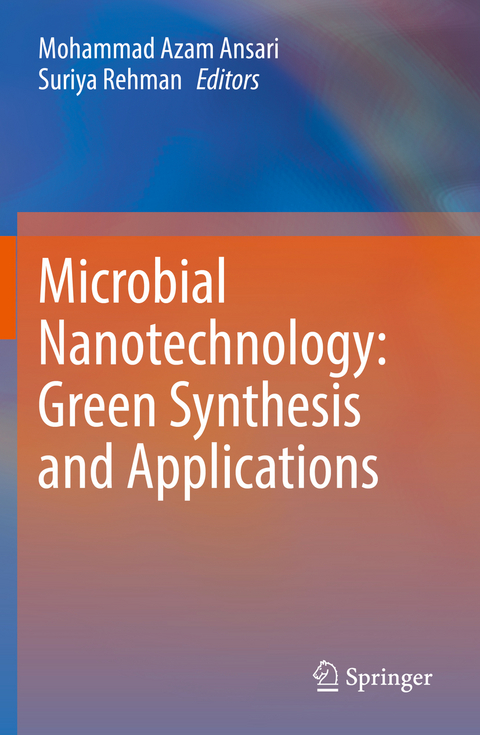
Microbial Nanotechnology: Green Synthesis and Applications
Springer Verlag, Singapore
978-981-16-1925-0 (ISBN)
This book introduces the principles and mechanisms of the biological synthesis of nanoparticles from microorganisms, including bacteria, fungi, viruses, algae, and protozoans. It presents optimization processes for synthesis of microbes-mediated nanoparticles. The book also reviews the industrial and agricultural applications of microbially-synthesized nanoparticles. It also presents the medical applications of green nanoparticles, such as treating multidrug-resistant pathogens and cancer treatment. Further, it examines the advantages and prospects for the synthesis of nanoparticles by microorganisms. Lastly, it also presents the utilization of microbial-synthesized nanoparticles in the bioremediation of heavy metals.
Dr. Mohammad Azam Ansari is currently working as Assistant Professor at the Institute for Research & Medical Consultation, Imam Abdulrahman Bin Faisal University, Dammam, Saudi Arabia. He has earlier served as Assistant Professor in the Department of Applied Medical Sciences, Buraidah Private Colleges, Saudi Arabia (2014-2017). He has more than 8 years of research and teaching experience in general biology, microbiology, bacteriology, mycology, and nutritional biochemistry. His research interests are in green synthesis of nanomaterials, identification, and characterization of antibacterial, antifungal, antibiofilm, anti-quorum sensing, and anticancer activity of green nanoparticles. He has published more than 85 research articles in journals of international repute and authored or co-authored numerous book chapters.
Chapter 1_Introduction to Microbial synthesis of Nanoparticles: advantages, disadvantages and prospects.- Chapter 2. Prokaryotic and microbial eukaryotic system for the NP synthesis.- Chapter 3. Enzymes involved in the extra and intracellular synthesis of nanoparticles.- Chapter 4. Bacterial synthesis of NPs and their scale-up technologies.- Chapter 5. Fungal biogenesis of NPs and their limitations.- Chapter 6. A Role of virus in nanoparticle synthesis. .- Chapter 7. The Algal biogenesis of NPs.- Chapter 8. Protozoa, an emerging candidate for the synthesis of NPs.- Chapter 9. Industrial Perspective of microbial application for NP synthesis.- Chapter 10. Microbial nanotechnology in treating multidrug resistance pathogens. .- Chapter 11. Microbial nanoparticles for cancer treatment.- Chapter 12. Role of microbial nanotechnology in diagnostic.- Chapter 13. Application of microbial nanotechnology in agriculture.- Chapter 14. Management of plant fungal disease by microbial nanotechnology.- Chapter 15. Microbial nanotechnology for bioremediation of heavy metals.- Chapter 16. Medical and cosmetic applications of microbial nanotechnology.- Chapter 17. Comparative analysis of cellular internalization propensity between the commercial and microbial assisted nanoparticles.
| Erscheinungsdatum | 14.09.2022 |
|---|---|
| Zusatzinfo | 44 Illustrations, color; 3 Illustrations, black and white; VIII, 359 p. 47 illus., 44 illus. in color. |
| Verlagsort | Singapore |
| Sprache | englisch |
| Maße | 155 x 235 mm |
| Themenwelt | Medizin / Pharmazie ► Studium |
| Naturwissenschaften ► Biologie ► Mikrobiologie / Immunologie | |
| Technik | |
| Schlagworte | Biomedical Applications • Bioremediations • green nanotechnology • Industrial Applications • microorganisms |
| ISBN-10 | 981-16-1925-5 / 9811619255 |
| ISBN-13 | 978-981-16-1925-0 / 9789811619250 |
| Zustand | Neuware |
| Haben Sie eine Frage zum Produkt? |
aus dem Bereich


